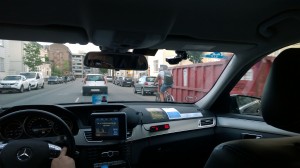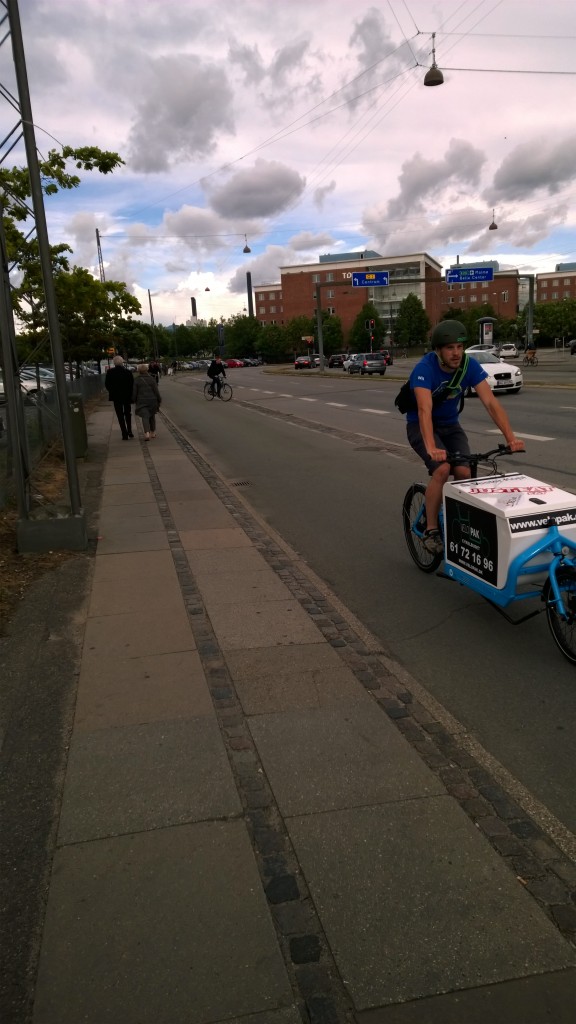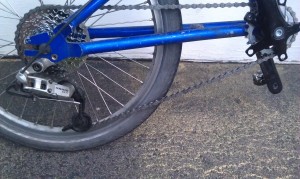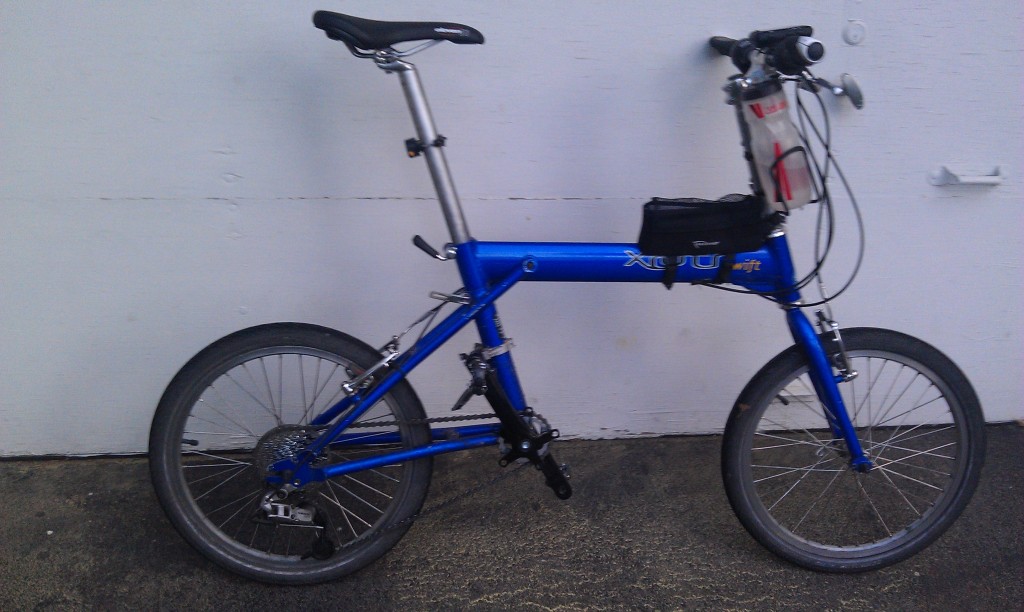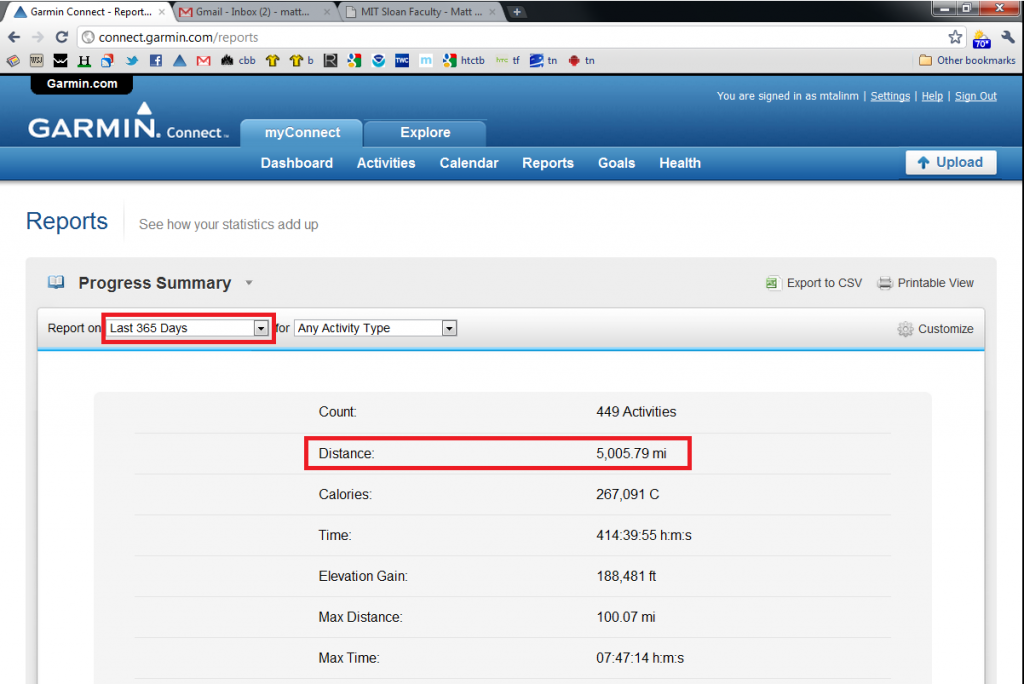In February, one of my semipro bike racing buddies cajoled me into signing up to climb Mt. Washington on two wheels. “With the right gearing it’ll be no problem, he said.”
Not exactly a member of the zero-body-fat crowd, I set about working on both the numerator and denominator of the power-to-weight ratio. I started doing hill repeats on Great Blue Hill, quickly discovering that I was one of the slowest on Strava.
So I signed up for one of those personal trainer types, which was going great until i woke up with pain in my neck one morning before the workout. I told him about it, but he still pushed me. I think I felt it when my rotator cuff tore, putting me out of commission for a few months.
(Ironically, it was a very temperate winter and I could have been commuting every day.)
Around May I started feeling better thanks to 2x weekly physical therapy, so i started commuting again and doing laps on Great Blue Hill. Knocked a few minutes off of my hill time (though still slow on Strava) and started to feel like I might have a chance, though I knew I needed low gearing.
Figured that at my weight the lowest possible gearing would be the way to go. The small wheels of a folder offer lower gearing than a standard bike, so I bought a triple crank for the square-taper bottom bracket of my folder and started doing hills with that. It felt a little weird compared to the road bike – maybe power transfer was down – but I thought in theory it should be the right thing. so, my plan was to use it on the climb.
My first “real” climb was Mt. Okemo in Ludlow, VT. It was also the first organized race I had participated in, and I was fully unprepared. The first problem was that I discovered the day before that the rear rim of my climbing folder was cracked. I had another folding bike but couldn’t just transplant the wheel because it was built using a Capreo hub which is only compatible with the 9-speed Capreo cassette, and the climber had an 8-speed shifter. well, maybe it would’ve worked to transplant the rear wheel but instead I decided to go the other direction. Moved the crank with teensy 24t chainring over to the other folder. yes, the night before. Never a good idea.
The good thing about using the other folder is that it has drum brakes, which are better for descents than rim brakes (won’t overheat the rim). But the Capreo cassette tops out at 25 or 26 whereas I had a 32 on the non-Capreo folder. So, I didn’t have my full range. And I didn’t tighten the front bolts all the way (no skewers on a Sturmey-Archer drum hub, so I was running around looking for someone with a 15mm wrench just minutes before race start.
To make things worse, I ate late and then had a Clif bar at the starting line. Felt nauseous shortly thereafter. Plus, it was 90+ degrees and sweat was dripping into my eyes and coating my glasses. I only made it halfway up the 3.7 mile hill before having to get off and walk. With half a mile to go the sweep truck told me to turn around. That sucked.
The only saving grace was that Doug Jansen, curator of the Northeast Hill Climbing website, introduced himself after the race and offered his help. Still, I was too discouraged to really listen. I had signed up for Ascutney a month later but decided not to go. Several times almost de-registered from Mt. Washington, but Doug convinced me to go give Pack Monadnock a try in Peterborough, NH.
Pack was the turning point because it confirmed my suspicion that the folder was not the right bike. I couldn’t get up Pack on the folder, so I finally decided to spend the $200 to upgrade the cassette and derailleur on my road bike (11-36 + a Deore RD with a flipped b-screw to increase leverage). next time up Pack wasn’t easy, but I made it without stopping, including the final two-tenths @20% grade. “A real spanker!” as Doug says.
Still, I wasn’t sure whether I could really do Washington. I thought of going back to try Okemo again, but the 3-hour drive discouraged me. Doug had said I should do Pack a couple of times in a row, but I could never make the time. Then I wasn’t sure how I would get down from the mountain, but the Sunday before the race, the wife of the guy who put me up to this in the first place offered to drive us down.
At this point, I couldn’t say no. And I had spent the registration fee ($350) and paid for a 40th-anniversary jersey ($75), so I figured I would use this as a “diagnostic exercise” to see how I stacked up. Plus, I had finally figured out the right bike from Pack, and from Okemo I learned what I shouldn’t do with nutrition. And that I should bring a headband! I got a great headband with a plastic strip that throws the sweat off the side of your forehead instead of into your eyes.
But I knew it would be hard. After the torn rotator cuff I lost my drive to drop #s, and because I had to drop off my kid for class most of the summer i wasn’t able to commute to work like i usually do. In fact, I only commuted twice in the month of July. In fact, when I tried Blue Hill again in August my heart rate was considerable higher than it had been in May/June – and with standard gearing! Yikes.
The drive up was a pain in the neck, 5 hours to go what should have taken 3 1/2. Only got 6 hours of sleep I was so nervous. Forgot to bring a trainer for warmup. But there I was for the 8:40 start. And, thanks to Doug’s excellent advice, had had cereal and yogurt a couple hours earlier for breakfast. (Kept the yogurt cold by putting it in front of the window A/C unit, cute huh?)
Took it slow and steady from the beginning, staying on the 24t chainring the entire time to avoid dropping chains as sometimes happens in the 39->24 drop. My group (age 40-44) was past me on the first hill as expected, no worries. heard the gun go off for the 45-50s, and after 10 minutes or so they started to pass me. I was cool with that, too, as I was not going to push hard to early and pay the price. Just kept spinning in 24×36, about 3mph and a bit faster in the flatter sections (not that there are many flat sections!). The cool thing is that as people passed me, they would say things like “rock on, man!” That took the edge off of being passed by a unicyclist and an 8-year old riding with his dad.
After a couple of miles, it felt like I needed to pee. I had hydrated pretty aggressively, so that made sense. Didn’t want to hop off, as once I stopped on Okemo it was all over, but it was just too much. So i stopped but that wasn’t it. turned out my junk had gone numb. This was really annoyed because I had a pro fit and bought the saddle on top of the expensive fitting. At least the new shoes were working for me so far.
Again, my goal was to go halfway, equal to the Okemo climb I couldn’t finish. I was okay through 2.5, 3.0 and 3.5, at which point halfway was a sure thing. I managed to keep my heart rate at around 175 for most of the time (a bit higher for some of the steep parts of mile 2), so I actually felt pretty good. Quads in particular were fine, though the adductors were a little painful.
At this point my goal was to finish half of the rest – 5.6 miles. Little did I know this would be the worst part. Mile 5 is unpaved, a dirt road with gravel. your tires feel like they are sinking into the dirt. I almost quit several times on this stretch. Luckily there was a pull-out where I could rest for a bit and get my Camelbak refilled. (Btw, the Camelbak was great – surprised more people don’t use them.)
I felt better after getting past the dirt road and back onto gravel around mile 5.5. At this point my adductors were really in pain, but my heart rate was surprisingly low. Still not much over 90%. Still felt good at mile 6. But at 6.5, the sweeper truck told me “there will be some cars coming down soon.” One van headed down the mountain, and that wasn’t too bad. But then a string of cars started down.
I understood why they had to let the cars down – it had been long enough. But the cars made it a bit too scary to keep riding. One way of keeping the heart rate down is to do mini switchbacks on the road’s two lanes. When the road is reduced to one lane, you not only have to go straight up but also have to worry about the right edge. On this particular stretch, the right edge was a cliff. I’m terribly scared of heights. So I jumped off and started walking, much to my disappointment.
But it wasn’t that discouraging. I had ridden more than twice as far as on Okemo without walking. That felt good. I thought of looking for the sweeper truck, but then some of the supervisors said “hey, lots of people walked from here! go for it!” So I took my road shoes off, hung them on the brifters, and started walking in my socks.
What happened next was really something. While I felt sheepish about walking, every single car coming down the mountain cheered me on. I’m sure I looked ridiculous – in fact, I know I did because the race photographer got an ugly clip of me pushing the bike just after I hopped off – but I kept going. I hopped back on for a brief, mercifully flat stretch not next to a cliff. But then it was back to a cliffside road, so I walked again. A moron in a Mini stopped to take a photo, waving traffic around him. i had to yell to point out that he was sending cars directly at me.
There were three of us at the end. One guy was still riding, and the other was walking like me. It was at this point I started to feel hungry for the first time. Luckily, i had pre-opened some granola bars. The guy still riding – not sure how he was so far back – took off, leaving the two of us. I was determined not to be last, so I made sure I had an edge on the other guy in crossing the finish line. The joke turned ou to be on me, though, as he had started 10 minutes later. So, I wasn’t last, but I was the slowest.
But no matter. My goal for the day was just to make it halfway up, and I got 6.5/7.6=85% of the way before walking. And I probably could have made it a bit further if not for the cars coming down – of course, I would’ve needed to be faster to beat them.
I would say a few things kept me going even though the adductors were burning. one was just wanting to see how far up I could make it. Another was that I had paid $75 for the jersey and felt like I couldn’t wear it if I quit early and got driven up by the sweeper truck. A third was that I just wanted to be able to say I got as far as possible.
So for next year my goal is to make it all the way up without walking. I’d say the bike is in good shape, don’t think I would change a thing. Obviously one can always improve power, so I’ll do more hillclimbing and commuting, especially the month before the race. But the big thing is reducing the denominator of the power/weight ratio.
Next year I’ll have to do Newton’s Revenue (the July version of the race), so I have 11 not 12 months to train. I’m curious whether the commuting helps as much as I think, or whether I should reduce that. “Junk” miles don’t help all that much as I’ve discovered. Still wondering whether to continue with the vegan things as opposed to backing off to veggie (kind of halfway there already) or readopting meat. Definitely can’t do a low-carb plan, I bonk too much.
The best part is that the race winner emailed me out of the blue a copule days after the race to say “nice effort.” Class act.
Sorry no pictures. transcript here
 Comments(45)
Comments(45)